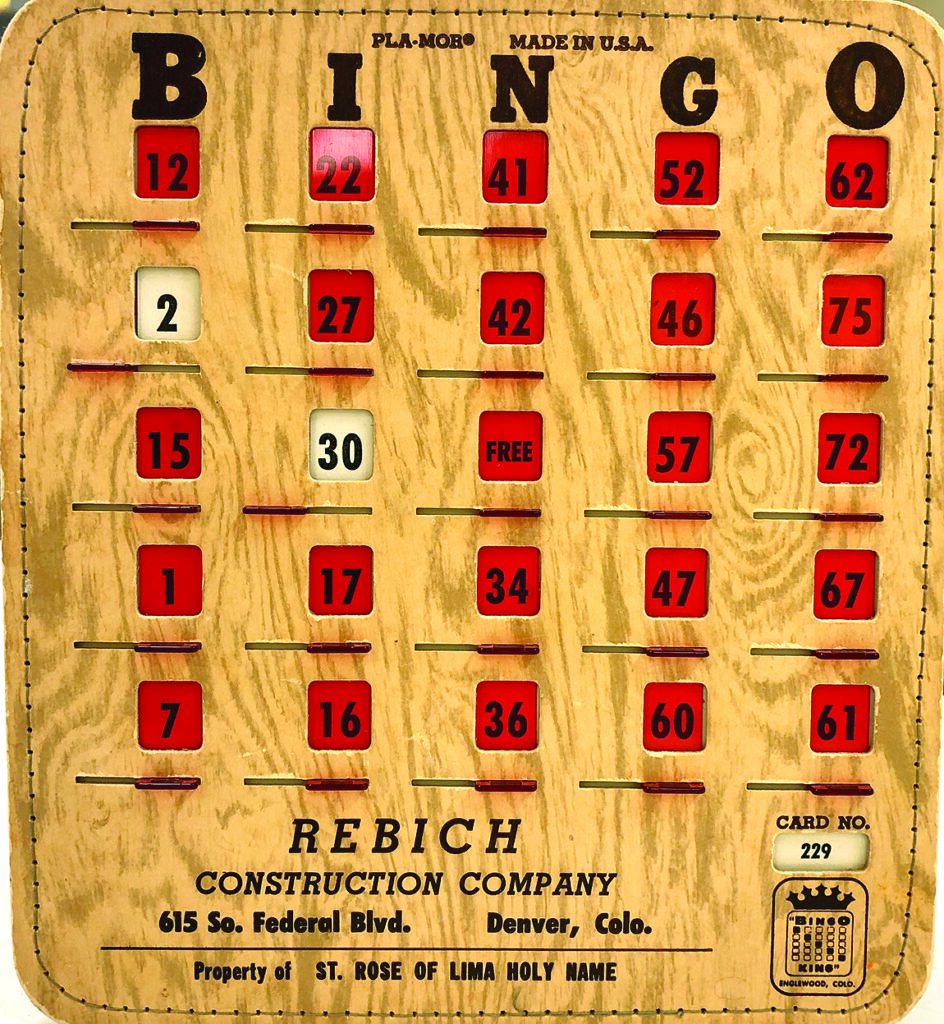
When the afternoon’s session shifted from rounds of regular bingo to what my tablemate referred to as “the specials,” I started to panic. There were just two cards in front of me, yet I found myself struggling to focus. I turned my hearing toward Dorothy, the dedicated caller at the front of the room, while scanning my cards for matches and bingos. I leaned over to Mary, who works with residents at The Gardens at St. Elizabeth, “Is this the Postage Stamp?” “No,” she replied with a smile, “it’s a Postage Stamp when the four covered spots are in the upper right corner.”
Bingo required a level of concentration I hadn’t given it credit for. Just as I was starting to hope this game—that has hung onto popularity for centuries—would wither away before I retire, I found myself intrigued. Improved concentration turns out to be one of many benefits derived from playing the game.
While not widely studied, a handful of researchers have uncovered cognitive benefits for those who play routinely: greater attention span, better concentration, faster mental speeds, and boosts in short-term memory. Regular players are more active and energetic outside bingo as well. And minor adjustments to the materials and game setting can retain bingo’s appeal for people living with dementia.
A few days after hauling home my winnings (two dimes and a York Peppermint Pattie) from The Gardens, I was back at a bingo table. This time, at the Highland Rec Center. Bingo was one of the first in-person group activities to resume in older adult settings across Denver, and I was starting to get to the bottom of why.
At Highland we sat a little further apart, yet players also knew each other by name. Alice, a regular, warmly oriented newcomers. Richard chimed in, “If you win more than three times, we let someone who hasn’t won get the prize.” We played four cards each from an assortment of sturdy vintage cards made with built-in transparent red sliders to cover each number. Alice leaned over to make sure I had what I needed.

The prizes—an assortment of grocery items—were displayed on a table off to the side of the room. This meant that if you won, you got to stretch your legs briefly before settling in for the next game.
As I sat with my four cards, enjoying the cool room and friendly banter, my concentration waned. My mind veered to the times I’ve played lotería. This game, sometimes referred to as Mexican Bingo, comes with a similarly long history. And I suspect even more cognitive benefits. In my experience, the relationship between players, caller, and the 54 numbered and colorfully illustrated cards is extremely dynamic. The caller might say the selection by name, but often provides a short phrase or clue instead. Players puzzle out which image is the match. Callers adapt their clues and approach to various settings and audiences where the game is being played.
My attention snapped back into the large room at Highland and I scanned the lit board on the wall to catch up with the game. Wait—I have a bingo! “BINGO!” There was something wholly satisfying about yelling the word and anticipating a prize. I strolled over to make my selection: a canister of stacked potato chips. Yes! As I sat back down, the player to my right pointed out she hadn’t won yet. We all wished her luck and hoped her moment would come soon. She got up to swap out two of her cards for ones with better numbers. The social benefits of the game began to dawn on me.
And if you think I’m exaggerating about bingo’s cognitive load, try scanning four bingo cards for arrays like Layer Cake, Avalanche, Kite with a Tail, and Cross in the Middle.
Dorothy, The Gardens’ volunteer bingo caller, helped me make my way to the elevator after that first time playing there. Life wasn’t easy for residents who were cooped up in their rooms for many months. But she’s seeing the glass half-full. She read a lot and did puzzles.
Steve, who joined us walking down the hall, reported a touch of exhaustion balancing everything. Most activities are back on the calendar now. Long-time residents lean on their keen scanning abilities to recognize and properly welcome newer residents whom they had only seen wearing masks up until now.
And renovations to the building made a new challenge out of navigating the place. But residents are taking it in stride. I wonder if bingo is making an impact, or if folks are simply so relieved to be back together that everything else feels easier.
Kathryn has lived in North Denver since around the time the Mount Carmel High School building was razed and its lot at 3600 Zuni became Anna Marie Sandoval Elementary. She’s raised two children in the neighborhood, worked at several nonprofits, and volunteered with the Alzheimer’s Association Colorado Chapter.
Do you have story ideas for The Gray Zone? Email Kathryn@DenverNorthStar.com

Be the first to comment